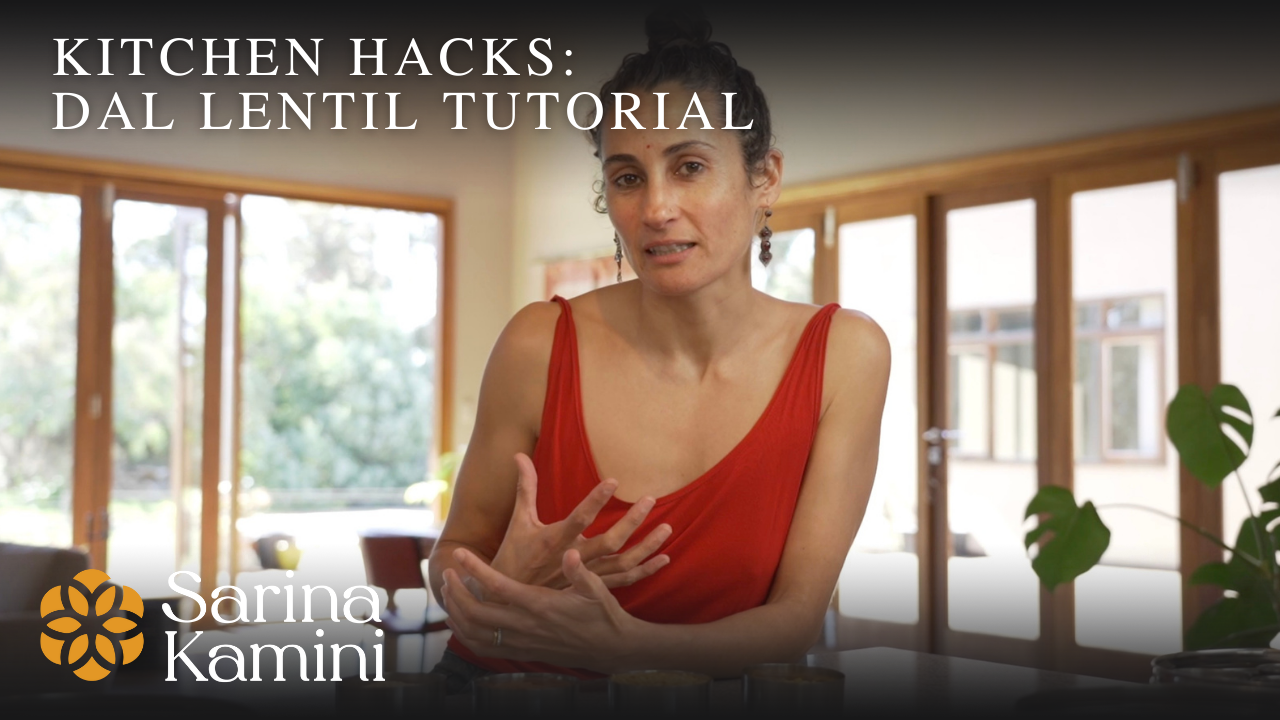LENTIL TUTORIAL
LENTIL TUTORIAL

Knowing your lentils means amazing dal every time. The most frequent questions that come out of my classes involve dals - how to draw the spice out, get away from glugginess and create that smooth, spicy and soft taste that a really great dal offers. It has to start with using the right lentils for the right spice, and soaking them and cooking them in the right way. This is a starter tutorial. See below for specific information on the four lentil types covered in this video. Check out my Simple Yellow Dal recipe if you’d like to try out your new skills. Or try the Red Lentil & Curry Leaf Dal for a different take.
LENTIL TUTORIAL:
Channa dal is otherwise known as split chickpeas. This is my favourite lentil to use to make a simple yellow dal but they do need some love in order to prepare them for spice. Start by soaking overnight as these are harder lentils that benefit from softening prior to cooking in order to ease digestion and allow the lentils to take on more spice. The hardness of channa dal is a benefit in terms of indicating a lesser starch content, which keeps them from cooking into a gluey mess. Rinse the channa dal free from the soaking water before cooking. This lentil creates a very beautiful structural dal that will hold its shape a little. Consider 1 and 2/3 cups of water to each 1 cup of soaked channa dal.
Toor dal is known as a split pigeon lentil. Toor is my other favourite lentil to use to make a simple yellow dal. It is softer than channa dal so requires a little less soaking time - though I would still give it a minimum of four hours. I add a little more water to toor dal than channa dal as it will break down a little further, creating a denser end result while still holding a whisper of structure. Consider 1 and 3/4 cups of water to each 1 cup of soaked toor dal.
Split white urd dal is much softer, smaller in size as a lentil and more delicate than either channa or toor dal. It is used in South Indian cooking to make idli and dosa when mixed to a 50-50 ratio of idli rice. When using split white urd lentils at home to make dal, I soak for an hour or so and then mix with a soaked toor or channa dal in order to give structure. The mix I use is two thirds channa or toor, and one third urd. This gives me my most desirable end result. Structure is a really important component of spice transmission in terms of flavour, which is why it’s always such a focus for me.
Red lentils provoke the most questions for me in my classes regarding dals, chiefly because they seem to be widely favoured for use courtesy of their softness which makes them a quick cook. But the softer the lentil, the higher the starch, and the more likely the end result will be gluey with a muffled spice profile IF the lentil hasn’t been treated well. Make straight red lentil dal less gluggy by increasing the water content to 1 cup of lentils to 2 cups of water. I will also toss in some raw chopped carrot and potato in this part of the cooking process in order to make sure the red lentils don’t clump. Soak red lentils for less time, as even soaking will contribute to a gluey end texture: one hour is plenty.
General tips in regards to soaking lentils: rinse the lentils before soaking until the water runs clear. Double the water to lentil ratio when soaking as they will soak up a lot of liquid. Rinse the soaked water from the lentils before cooking to remove any gunk and excess starch from the soaked lentil itself.
